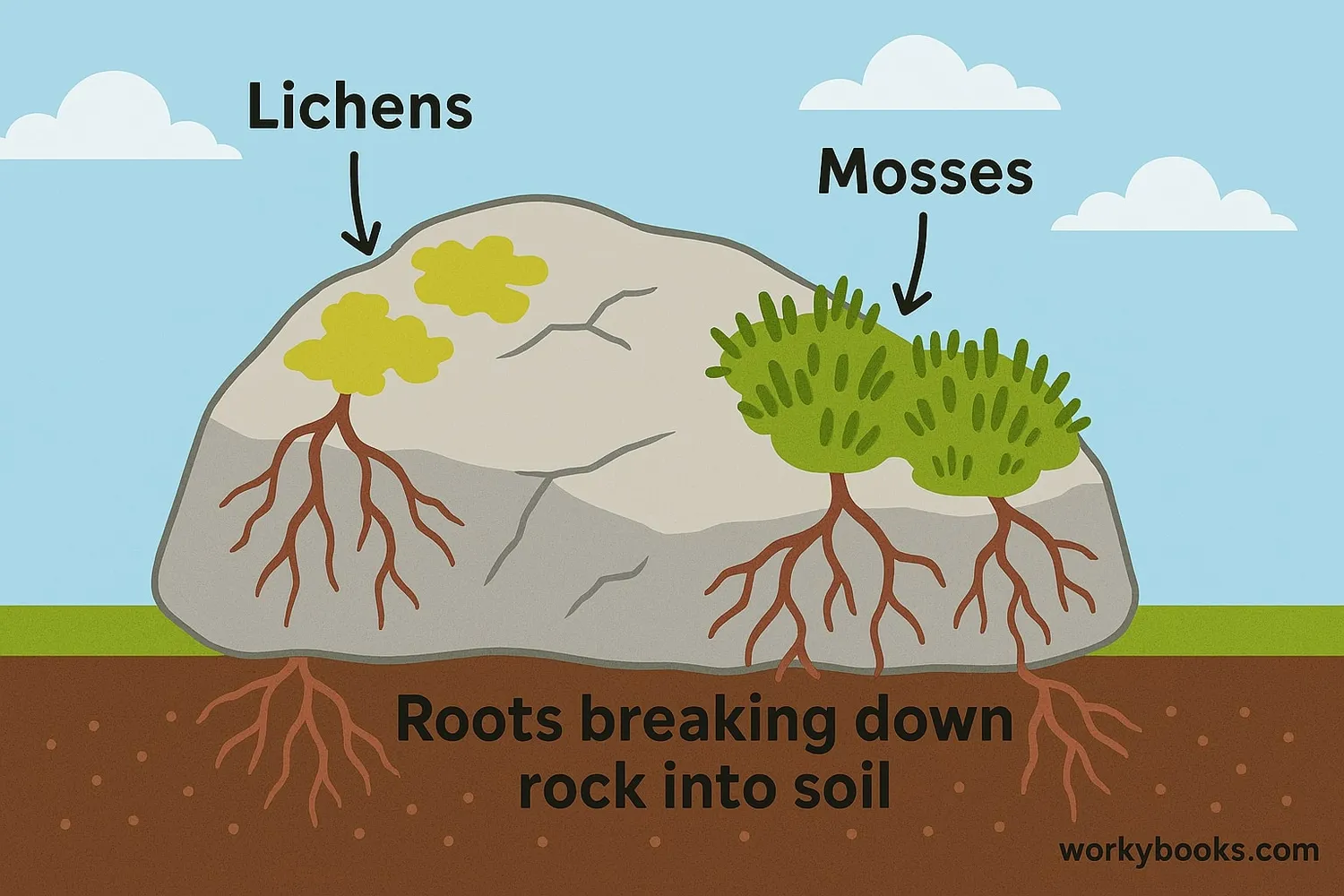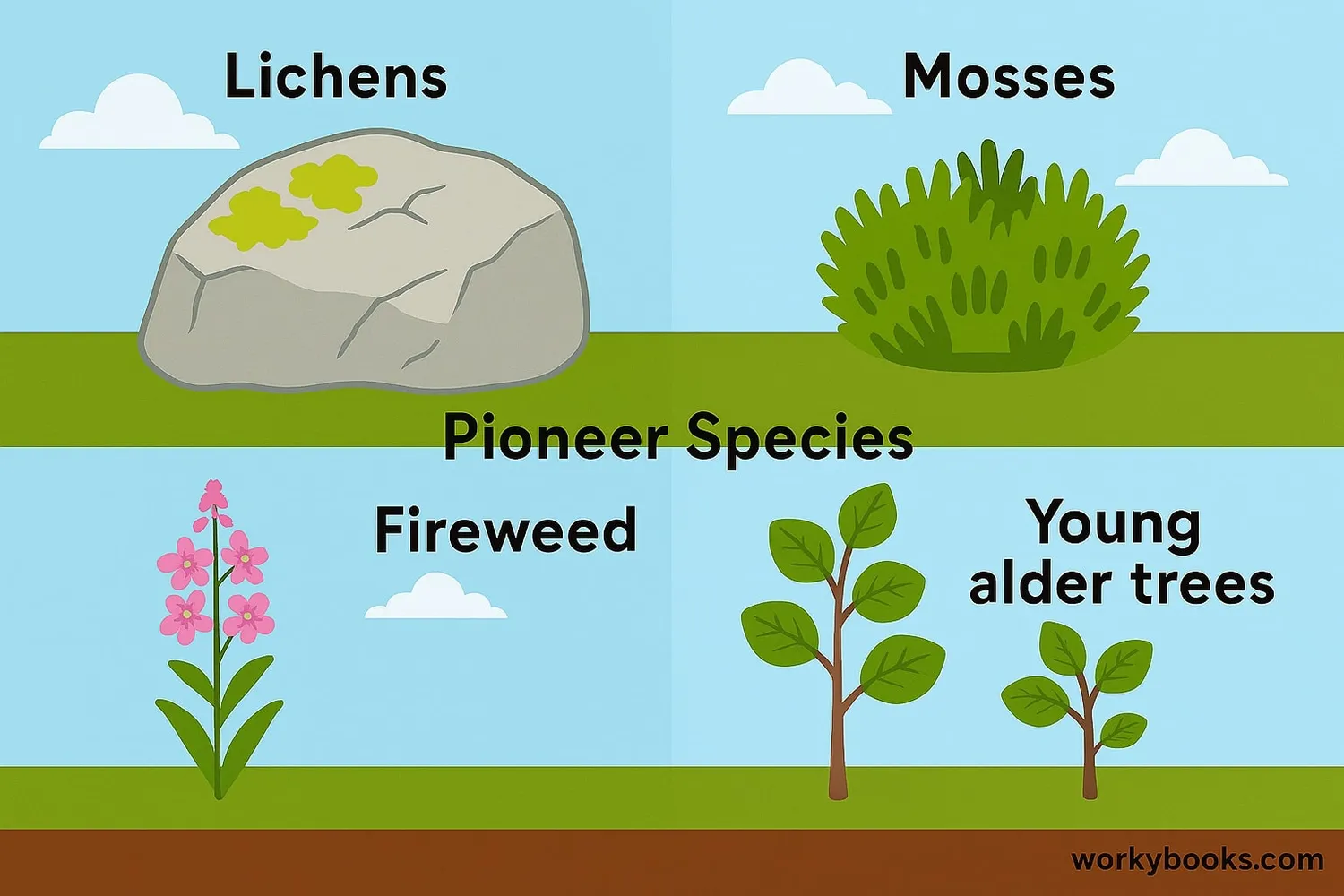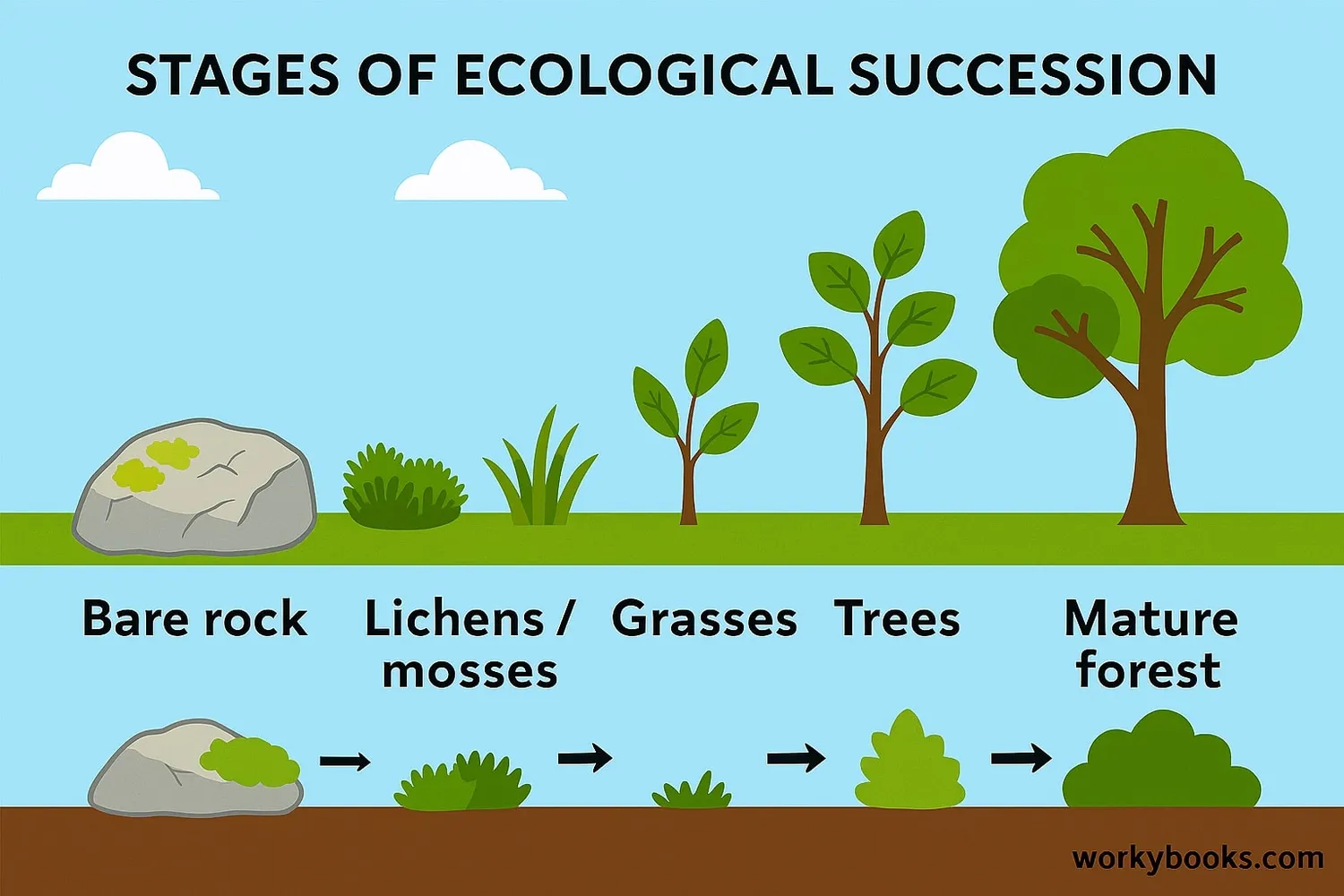Pioneer Species - Definition, Examples, Quiz, FAQ, Trivia
Discover the first plants that colonize barren environments and start ecological succession
What Are Pioneer Species?

Pioneer species are the first plants, lichens, and microbes that colonize barren or disturbed environments where no soil exists. They're called "pioneers" because they're the first to arrive and start the process of ecological succession - the gradual change in an ecosystem over time.
Think of pioneer species as nature's first responders! They arrive in places where other plants can't grow yet, like bare rock after a volcanic eruption, retreating glaciers, or abandoned parking lots. These hardy organisms can survive in harsh conditions with little soil or nutrients.
Key Characteristics of Pioneer Species:
• Able to grow in poor soil conditions
• Fast-growing and reproduce quickly
• Tolerant of extreme sunlight and temperature
• Often can fix nitrogen from the air
• Help create soil for other plants
Examples of Pioneer Species

Pioneer species vary depending on the environment, but they share the ability to establish themselves where other plants cannot. Here are some common examples:
Lichens and Mosses
Often the very first colonizers on bare rock. They secrete acids that break down rock into soil particles.
Fireweed
Quickly colonizes areas after forest fires, with beautiful pink flowers that produce many seeds.
Alder Trees
Pioneer trees that can add nitrogen to the soil through special root bacteria, enriching it for other plants.
Other examples include certain grasses, clover, lupine, and birch trees. In aquatic environments, algae are often pioneer species that colonize newly formed ponds or disturbed water bodies.
Did You Know?
Lichens are actually two organisms working together: a fungus and an alga or cyanobacterium. The fungus provides structure while the algal partner makes food through photosynthesis!
Why Pioneer Species Are Important

Pioneer species play crucial roles in ecosystem development and recovery:
Soil Formation
They break down rocks and add organic matter to create soil where none existed
Nutrient Cycling
Some pioneer species add important nutrients like nitrogen to the soil
Ecosystem Recovery
They help ecosystems recover after disturbances like fires, floods, or human activities
Habitat Creation
They create microhabitats and shelter for insects, birds, and other organisms
Succession Initiation
They start the process of ecological succession that leads to more diverse ecosystems
Without pioneer species, damaged ecosystems would take much longer to recover, and some might never develop into stable, diverse communities. They are essential for life to reestablish after major disturbances.
Pioneer Species Knowledge Check
Test your understanding of pioneer species with this quiz. Answer all 5 questions to see how much you've learned.
Frequently Asked Questions
Here are answers to some common questions about pioneer species:
Interesting Facts About Pioneer Species
Discover some amazing facts about pioneer species and ecological succession!
Volcanic Colonizers
After the 1980 eruption of Mount St. Helens, fireweed was one of the first plants to appear on the volcanic debris. Its seeds were carried by wind from distances up to 20 miles away!
Slow But Steady
Lichens grow extremely slowly - sometimes less than 1 millimeter per year! But over centuries, they can completely break down rock surfaces into soil particles.
Glacier Bay Succession
In Alaska's Glacier Bay, scientists have documented the entire succession process from bare rock to spruce-hemlock forest over 200 years since the glaciers retreated.
Designed for Travel
Many pioneer species have seeds specially adapted for wind dispersal. Some fireweed seeds can travel over 100 miles on air currents, allowing them to quickly reach newly disturbed areas.


